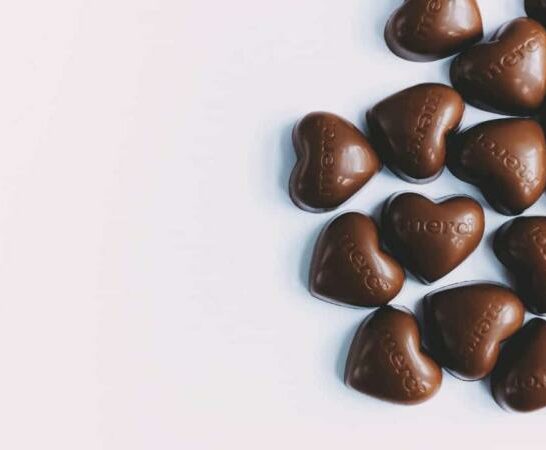Chocolate is a staple in most households across the globe. Americans alone consume almost 3 billion pounds of chocolate every single year. That is an astronomical amount!
Regardless of how much we love to eat chocolate, we still find ourselves asking questions regarding one of our favorite foods.
For example, most people don’t know how chocolate is made, which country produces the most chocolate, or when chocolate expires.
If you’ve been wondering about chocolate lately, you’re probably wondering, can chocolate mold?
Also, if it can mold, how long does it take to get there? These questions are common among those asked about chocolate specifically, and we’ve got an answer for you!
Can Chocolate Mold?
No, chocolate cannot mold. It’s almost impossible (we’ll say 99.99%) that the chocolate bar you’ve been keeping in your cupboard for a long time grows mold. Chocolate lacks the moisture required for proper mold growth. If you have chocolate that’s been sitting around since last Easter or Halloween from a few years ago, you’ll likely notice that it’s turned white, and this phenomenon is called sugar bloom or chocolate bloom.
Mold on Chocolate
Good news for chocolate lovers! The mold you thought was growing on your chocolate, therefore rendering it inedible, is not mold at all. Over time, chocolate can develop a white coating referred to as a sugar bloom or chocolate bloom.
While the sugar bloom is fuzzy and chalky, it’s not mold. Chocolate does not contain water, and moisture is necessary to grow mold. Sugar bloom will likely alter the taste of your chocolate bar, but it will not make you sick.
What is Sugar Bloom?
Also known as chocolate bloom, sugar bloom is basically what the sugar or fat content in chocolate looks like when it ages and crystallizes.
Bloom happens when chocolate is exposed to an external moisture property or inconsistent temperatures.
For example, you might notice sugar blooming on a chocolate bar that’s been sitting in your car during the summer.
As the daytime temperatures rise, the chocolate melts, and when it drops at night, the chocolate will begin to solidify. Chocolates that go from melted to solid will show sugar bloom rather quickly.
Your chocolate will develop sugar bloom if exposed to an outside moisture source as well.
One year on Halloween, I recall the weather being atrociously wet. We trudged with the kids from house to house in the pouring rain, soaking a great deal of the candy.
Within days, we opened chocolate bars coated in a white chalky substance, also known as sugar or fat bloom!
While blooming looks a whole lot like a fungus growing on the chocolate, I can assure you it’s not, but there is a slight difference between the sugar and fat content in chocolate blooming.
Sugar Bloom
Most chocolate lovers are happy to know that the white stuff showing up on their beloved candy bars is nothing more than chocolate bloom.
If the chocolate in question was relatively inexpensive, it might bloom faster than other brands, simply because the manufacturing and tempering process is different.
The more porous the chocolate, the faster it will bloom.
Chocolate or Fat Bloom
Chocolates with a buttery, high-fat content typically bloom because the cocoa butter in the chocolate melts slightly and then solidifies incorrectly.
This temperature change doesn’t have to be extreme, and it can happen with the heat source fluctuating within your home.
How to Fix Bloom on Chocolate
Now you know that you do not have to throw chocolate away when it turns white; you can learn how to fix it. Chocolate that has sugar or fat bloom on it can simply be retempered or melted.
Toss your candy bar (or bars) that have begun to form sugar bloom into a microwave-safe bowl. Melt the chocolate for 30 seconds at a time, stirring between intervals.
You can also use a double boiler to melt candy bars.
Once the chocolate has melted, you’ll notice the bloom has disappeared.
Next, you can recreate your candy bars by pouring your melted chocolate into candy molds and letting them harden.
Frequently Asked Questions About Can Chocolate Mold
Based on the amount of chocolate we consume as a society, it’s safe to say that we obviously love it! With love comes curiosity, and the internet is full of questions regarding the shelf life of chocolate.
Can chocolate grow mold?
Chocolate cannot grow mold as it lacks the moisture needed to do so successfully. If you notice a white substance similar to mold on your candy, it’s because the chocolate has begun to bloom. The bloom is harmless, and your chocolate is still edible, though the flavor may change.
Does chocolate expire?
Check the chocolate you have in your home now, and you’ll notice that your candy has a “best before” date instead of an expiration date. Chocolate does not come with an expiration date, as it technically does not expire.
Can I bake with old chocolate?
You can bake with chocolate that has developed a sugar bloom. In fact, baking with old chocolate is one of the best uses other than melting it and making brand new candy bars!
Chocolate: The Everlasting Food
Okay, so chocolate may not last forever, but it certainly lasts for a long time! The taste might be slightly different due to a bit of chocolate bloom, but you can always melt it and start over.
If you’ve had a candy bar hanging around for a year or so, and you’re unsure if you should satisfy your cravings and indulge, this is your sign to go ahead. Your chocolate definitely hasn’t grown mold!
Moldy food left in the oven, can you still cook in it? Read this article next.

